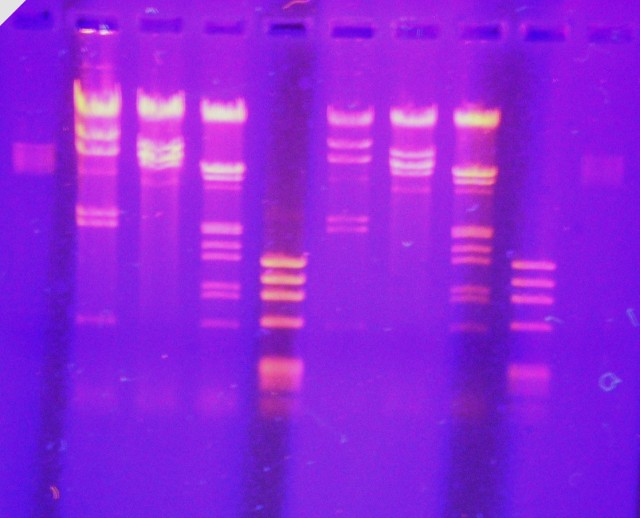Vitamin C Assay Introduction and Reagents

Vitamin C (ascorbic acid) is required for the synthesis of collagen and to enable WBC phagocytosis, among others. It also serves as an antioxidant, protecting the body from oxidant carcinogens. It is found especially in fresh fruits and vegetables, but is labile, and deteriorates with storage. We will measure vitamin C first in pure solution (to standardize the assay reagents), then in fruit juice. Finally, as a means of evaluating the amount of vitamin C you are taking in, we will measure the quantity you excrete in one hour in your urine.
We will assay vitamin C by using a “starch-iodine” titration. When iodine is added to a starch solution, it reacts to produce a purple color. However, if there is any vitamin C in the solution, it “neutralizes” the iodine, preventing the formation of the purple color. Thus, the amount of vitamin C present in a solution may be measured by first adding a small amount of acidified starch (called “reaction mix”), and then adding iodine drop wise until the solution turns purple. The amount of vitamin C present will be proportional to the amount of iodine required to turn the solution purple. This drop wise addition of a reagent to a specified endpoint is called a titration.
The solutions required to perform the assay for vitamin C are listed below. While they will be available for you in the lab, you should know the function of each of the ingredients in the titration, and how to make up the solutions if needed.
Here are the reagents needed for the titration:
1) Reaction Mix: a dilute solution of starch which is slightly acidified to stabilize the color.
2) 0.1 N Iodine : the stock solution of iodine which must be diluted before using for titrations.
3) 0.01 N Iodine : titrant for the vitamin C titration
4) 1.000% vitamin C : a standard solution used to determine the conversion factor of the 0.01 N Iodine.
1) REACTION MIX, for 1 gallon:
1. Weigh out 1.2 g starch powder
2. Suspend starch powder in 200 mL dH 2O. Bring to boil with constant stirring, taking care not to burn.
3. Fill a clean 1 gallon jug half full with dH2 O.
4. Add the following to the half filled gallon jug:
a. 47 mL concentrated HCl
(CAUTION, extremely corrosive, use goggles, lab coat and fume hood, rinse out graduated cylinder immediately.)
b. 200 mL starch solution from step 2.
c. q.s. to 1 gallon with dH2 0, mix thoroughly.
5. Use 10-15 mL of reaction mix (Rxn mix) per titration flask, conveniently added with a repipet.
[for 5 gallons of reaction mix: 6 g starch, 235 mL concentrated HCl]
2) 0.1 N IODINE stock solution
1. Weigh out and dissolve in 100 mL dH 2O with much stirring:
12.7 g Iodine
20.0 g KI (potassium iodide)
2. q.s. to 1 liter with dH2 0, keep well capped with iodine-resistant plastic-lined lid.
3) 0.01 N IODINE solution (for titrations)
1. 378 mL 0.1 N Iodine added to gallon jug
2. q.s. to 1 gallon with dH2 0, mix thoroughly, keep well capped.
4) 1.000% ASCORBIC ACID standard solution:
1. Carefully weigh out 1.000 g ascorbic acid, add to 100 mL volumetric flask
2. Add approximately 50 mL room temperature dH 2 0, swirl to dissolve.
3. q.s. to 100.00 mL with room temperature dH2 0
4. Store capped at 4C.































